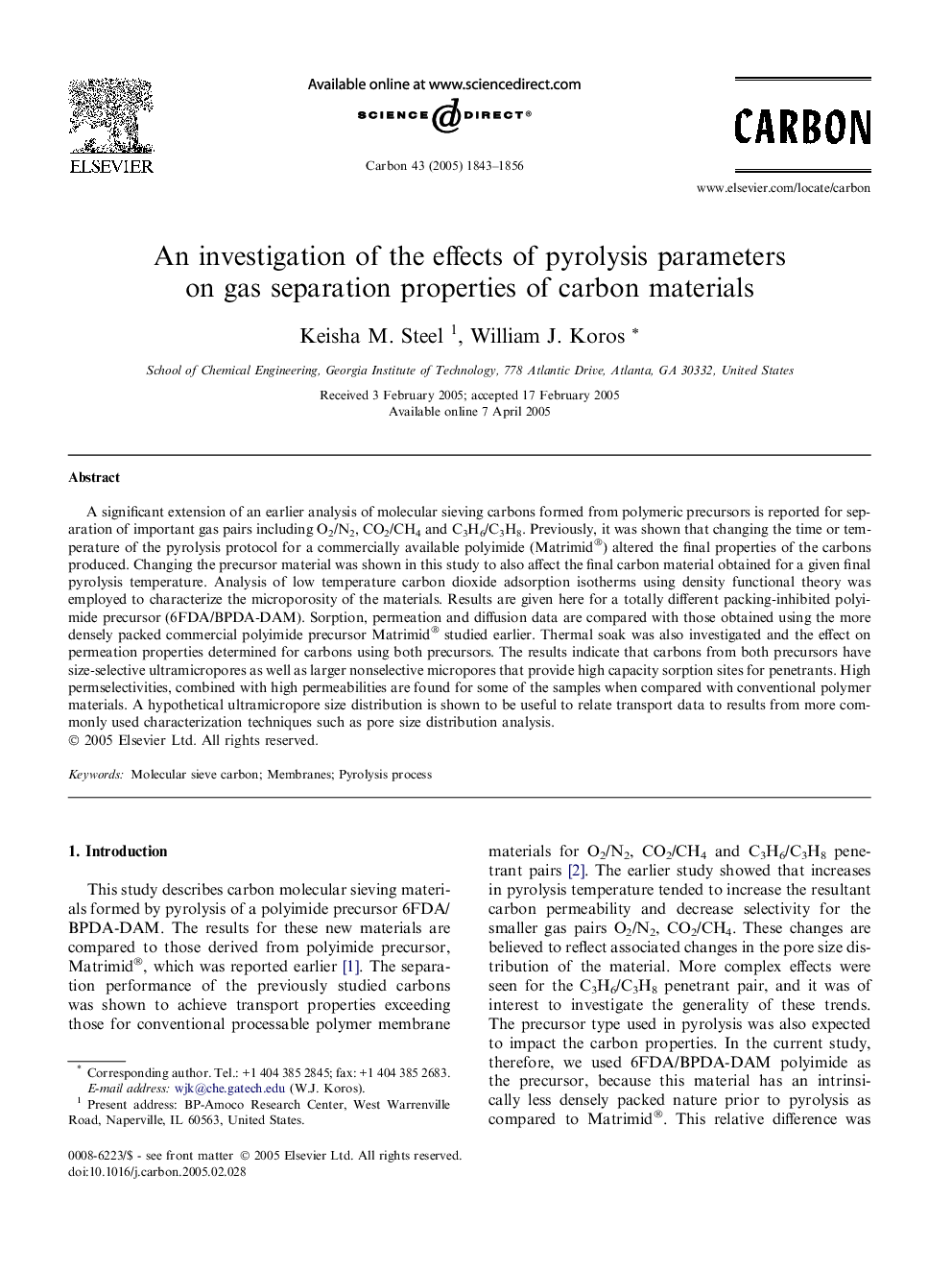| Article ID | Journal | Published Year | Pages | File Type |
|---|---|---|---|---|
| 1420129 | Carbon | 2005 | 14 Pages |
A significant extension of an earlier analysis of molecular sieving carbons formed from polymeric precursors is reported for separation of important gas pairs including O2/N2, CO2/CH4 and C3H6/C3H8. Previously, it was shown that changing the time or temperature of the pyrolysis protocol for a commercially available polyimide (Matrimid®) altered the final properties of the carbons produced. Changing the precursor material was shown in this study to also affect the final carbon material obtained for a given final pyrolysis temperature. Analysis of low temperature carbon dioxide adsorption isotherms using density functional theory was employed to characterize the microporosity of the materials. Results are given here for a totally different packing-inhibited polyimide precursor (6FDA/BPDA-DAM). Sorption, permeation and diffusion data are compared with those obtained using the more densely packed commercial polyimide precursor Matrimid® studied earlier. Thermal soak was also investigated and the effect on permeation properties determined for carbons using both precursors. The results indicate that carbons from both precursors have size-selective ultramicropores as well as larger nonselective micropores that provide high capacity sorption sites for penetrants. High permselectivities, combined with high permeabilities are found for some of the samples when compared with conventional polymer materials. A hypothetical ultramicropore size distribution is shown to be useful to relate transport data to results from more commonly used characterization techniques such as pore size distribution analysis.
